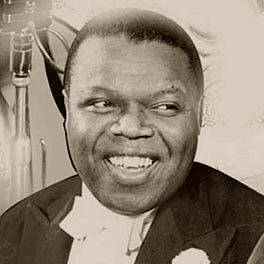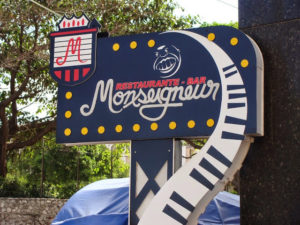BOLA DE NIEVE, MEMORIES OF THE “BLACK GARCÍA LORCA”. (Born: Havana). VIDEO.
Rafael Alberti defined him as “a Black García Lorca”.
“You can’t do more with a song”, said Spanish playwright Jacinto Benavente.
But the most immense description was of the immense Pablo Neruda:
“Bola de Nieve was married to music and lives with her in full of pianos and jingle bells intimacy, by pulling on the head keyboards from heaven. “Live Earth joy! sound heart health!” Well this only could have it written Neruda.
It is without a doubt one of the most brilliant musicians that has given the Caribbean island and a genuine icon of the Cuban idiosyncrasy.
All these comments about Ignacio Villa called by their classmates Bola de Nieve (opposite to prieto well being), nickname then disliked, at the age of twelve began studies in music theory and music theory. Already major enrolled in the Normal School for teachers.
In the thirties of the last century stood out as a piano accompanist, and unwillingness of Rita Montaner who accompanied on piano, the presenter announced it as a snowball and then America began to surrender to his angel.
BOLA DE NIEVE PLAYING AND SINGING.
After successful tours, Ignacio Villa returned to Cuba in 1935, under exclusive contract from Ernesto Lecuona. With the master arose in prestigious venues throughout America and Spain and United States. In the latter The New York Times called him a true revelation by his artistic personality. Radio, theatre and cabaret were their favorite places.
They compared him with Maurice Chevaliér and Nat King Cole. In the famous Carnegie Hall received one of the great emotions of her life to receive a standing ovation not just, endless. In the 1950s he conquered France, Denmark, nice, Rome, Venice and Milan. He returned to Mexico, their second homeland and there shared with figures such as Pedro Vargas and Agustín Lara, Toña la Negra. At that time he met Édith Piaf, who said: “no one sings”La Vie en Rose”as Bola de Nieve.
The ball had been defined and perfected his style to tell the song. For him there was no improvisation: studying and matured each topic. It dominated the cartoon song, the firmware development and the inflections folk of any country. As expressive resources alike used the melody, rhythm and the message of the texts.
Bola de Nieve recreated songs in English (Be careful, it´s my heart), in French (La vie on rose) Italian, catalan and Portuguese; he dared with old Spanish romances like the Knight of Olmedo and also brought his own compositions: if I could want, don’t let them forget you or that Ay, amor!; and mention apart from his unique version of “the Flor de la Canela” Chabuca Granda, which the author praised.
Bola was a fervent supporter of the Castro regime. He died in Mexico City during a musical visit not his way to Peru.
Agencies/Wiki/Carlos Rodriguez/InternetPhotos/YouTube/Arnold Varona/TheCubanHistory.com
THE CUBAN HISTORY, HOLLYWOOD.
BOLA DE NIEVE, RECUERDOS DEL “GARCÍA LORCA NEGRO”. (Born: Havana). VIDEO.
Rafael Alberti le definió como “un García Lorca negro”.
“No se puede hacer más con una canción”, decía el dramaturgo español Jacinto Benavente.
Pero la descripción más inmensa fue la del inmenso Pablo Neruda:
“Bola de Nieve se casó con la música y vive con ella en esa intimidad llena de pianos y cascabeles, tirándose por la cabeza los teclados del cielo. ¡Viva su alegría terrestre!¡Salud a su corazón sonoro!” Bueno esto solo podía haberlo escrito Neruda.
Se trata sin duda de uno de los más geniales músicos que ha dado la isla caribeña y un genuino icono de la idiosincrasia cubana.
Todos estos comentarios acerca de Ignacio Villa llamado por sus compañeros de escuela Bola de Nieve (todo lo contrario a lo bien prieto que era), apodo que entonces le disgustaba, a los doce años empezó estudios de solfeo y teoría de la música. Ya mayor matriculó en la Escuela Normal para Maestros.
Por los años treinta del siglo pasado se destacó como pianista acompañante, y por indisposición de Rita Montaner a quien acompañaba en el piano, el presentador lo anunció como Bola de Nieve y a partir de entonces América empezó a rendirse ante su ángel.
BOLA DE NIEVE AL PIANO.
Después de exitosas giras, Ignacio Villa regresó a Cuba en 1935, bajo contrato exclusivo de Ernesto Lecuona. Con el Maestro se presentó en prestigiosos escenarios de toda América y España y Estados Unidos. En este último lugar el periódico The New York Times lo calificó como una verdadera revelación por su personalidad artística. La radio, el teatro y el cabaret eran sus plazas preferidas.
Le compararon con Maurice Chevaliér y Nat King Cole. En el famoso Carnegie Hall recibió una de las grandes emociones de su vida al recibir una ovación que no se acababa, interminable. En los años 50 conquistó Francia, Dinamarca, Niza, Roma, Venecia y Milán. Volvió a México, su segunda patria y allí compartió con figuras como Pedro Vargas, Toña la Negra y Agustín Lara. Por esa época conoció a Edith Piaf, quien dijo: “Nadie canta “La vida en rosa” como Bola de Nieve.
El Bola había definido y perfeccionado su estilo de decir la canción. Para él no existía la improvisación: estudiaba y maduraba cada tema. Dominaba la canción caricaturesca, la de inalterable elaboración y la de inflexiones folclóricas de cualquier país. Como recursos expresivos utilizaba por igual la melodía, el ritmo y el mensaje de los textos.
Bola de Nieve recreaba canciones en inglés (Be careful, it´s my heart), en francés (La vie en rose) italiano, catalán y portugués; se atrevía con viejos romances españoles como El caballero de Olmedo y aportaba también sus propias composiciones: Si me pudieras querer, No dejes que te olvide o ese ¡Ay, amor!; y mención aparte de su inigualable versión de “la Flor de la Canela” de Chabuca Granda, la cual la autora alababa.
Bola de Nieve was a fervent supporter of the Castro regime. He died in Mexico City during a musical visit no his way to Peru.
Agencies/Wiki/Carlos Rodriguez/InternetPhotos/YouTube/Arnoldo Varona/TheCubanHistory.com
THE CUBAN HISTORY, HOLLYWOOD.








